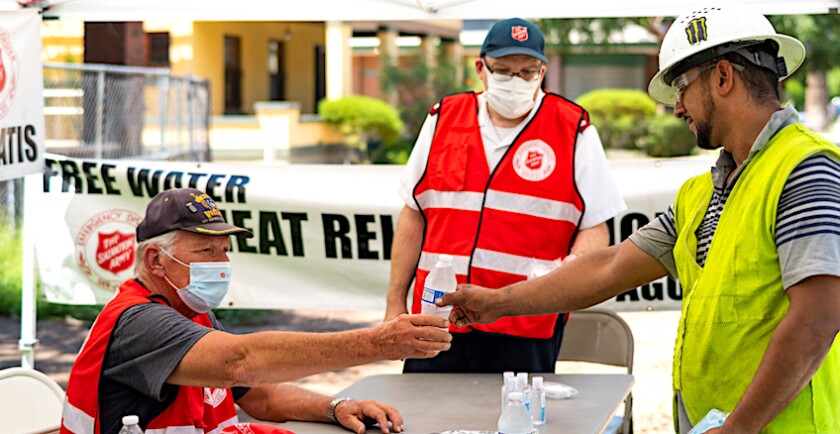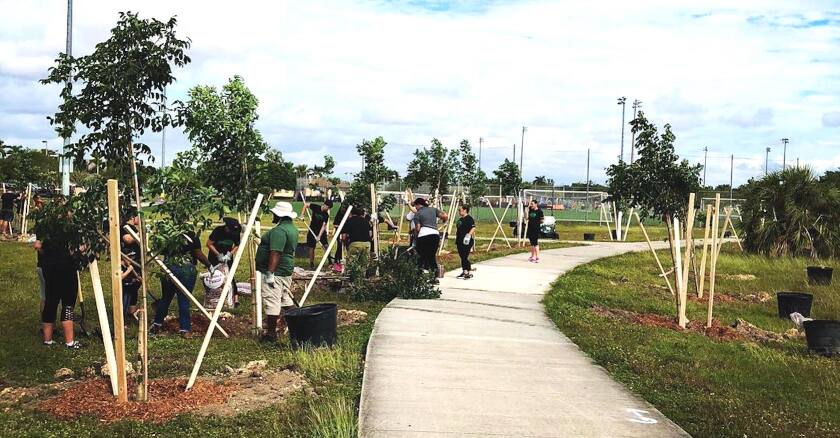The Heat-Related EMS Surveillance Dashboard, also called the EMS HeatTracker, uses national EMS databases to measure the impact high temperatures are having.
It compares a state or county’s rate of 911 calls for heat, the time it takes to reach a patient with heat illness, and the rate of those patients taken to a medical facility against national averages.
The Triangle experienced significant heat illness between Aug. 5 and 18, the most recent two-week period captured by the dashboard. Durham, Johnston and Wake counties all reported rates of heat-related EMS calls per 100,000 people at least double the national average of 1.2. Orange County’s rate was higher than the national average.
North Carolina saw the 10th highest rate of 911 calls for heat of any state over the same period, according to the dashboard.
The new dashboard is a departure from previous heat health data, which was typically based on the emergency room a patient was taken to, Ashley Ward, the director of Duke University’s Heat Policy Innovation Hub, told The News & Observer
“This gives a lot better fine-grain data,” Ward said. “We understand where people are actually getting sick from heat.”
The new dashboard also captures patients who are treated on-site without being taken to the emergency room, Ward added.
Hot temperatures expected to rise
Friday’s temperatures are expected to reach the upper 90s across Central North Carolina, according to the National Weather Service, potentially challenging record highs.
It’s the latest spell of hot weather this summer, in which Raleigh has already seen its fifth-hottest July on record, according to the N.C. State Climate Office.
Those temperatures are likely to continue to rise in coming years, according to the N.C. Climate Science Report, with temperatures expected to continue to rise due to man-made climate change and heat index values also climbing because a warmer climate means the air can hold more water vapor.
The impact of those temperatures isn’t always clear, according to area emergency room doctors.
Dr. Anjni Joiner, a Duke Health emergency medical doctor, said it it’s difficult to compare the number of patients she’s seeing with heat-related conditions to past years, in part because a doctor might not document a patient’s condition as heat-related.
Joiner said she’s seen heat illness in a wide range of populations. But the groups most impacted seem to be the elderly, unhoused patients and people with preexisting medical conditions like heart disease.
Like Joiner, Dr. Ryan Lamb, an emergency room physician at UNC Health Rex, said it’s difficult to see whether this summer’s impacts are more pronounced than past years.
On one recent 97-degree day, Lamb said, a patient arrived at the emergency room with symptoms of dehydration like a headache, vomiting and irritation of the kidney and pancreas. The man had been playing cricket outdoors for eight hours.
Lamb describes mild heat illness as feeling warm and swelling of the legs. Moderate heat illness is passing out, being dehydrated or feeling nauseous. And severe heat illness involves changes in mental state, like confusion.
Serious heat illness is most common among the elderly, Lamb said, or in patients who have chronic medical conditions like congestive heart failure or uncontrolled diabetes.
How the HeatTracker is used
The new EMS HeatTracker was meant to help local officials plan heat interventions like cool roofs and street trees while also helping local officials know where to open cooling centers and conduct outreach on hot days.
A key piece of the dashboard is national disparity data about the age, race, gender and urban, suburban or rural location of patients suffering from heat illness. That data reflects a phenomena long seen in research that people in rural and suburban settings suffer from heat illness at higher rates than those in urban settings, even while the number of urban patients is significantly higher.
In the most recent two-week period, for example, the rate of heat illness in rural America was 4.4 cases per 100,000, while suburban neighborhoods had a rate of 4.3 cases and urban neighborhoods a rate of 3.2.
Ward is hopeful that knowledge will shape how communities respond, noting that an effort like a cooling center that might work in an urban area is much less likely to protect a rural community. And the people who fall ill in rural communities tend to be younger and male, Ward said, leading to different interventions.
“Understanding these nuances around who is impacted by heat and where is the most valuable thing this dashboard provides. It really fleshes out some of those findings that we see in research,” Ward said.
Ward did say it would be helpful to be able to compare some of the data against regional or even state averages instead of national averages.
Despite wanting to see that information, the dashboard is still a very good start, Ward said. Officials from the agencies involved in creating it also seem to view the tool as a starting point.
“The effects of climate change and extreme heat on our daily lives are undeniable. This dashboard is a first step to gather critical data on heat-related illness and save lives,” Ann Carlson, the acting administrator of the National Highway Traffic Safety Administration, said in a release announcing the project.
But comparing the raw numbers of calls and times to patients across counties is not possible with the new resource. The raw numbers underlying the dashboard are not publicly available.
Ben Fisher, a data specialist at the University of Utah’s NEMSIS technical assistance center, said the information system’s data use agreement with states doesn’t let it share specific state, county or ZIP code data. That means the data underpinning the dashboard is not available to most users.
Fisher did say the head of the state EMS office would be able to share the raw data. North Carolina’s EMS office is housed within the N.C. Department of Health and Human Services.
Hannah Jones, a spokeswoman for the N.C. Department of Health and Human Services, wrote in an email, “We do not have a further data breakdown than what is presented and available on the NEMSIS dashboard and how it is presented there, and we are unable to create a further breakdown of that data at this time.”
This story was produced with financial support from the Hartfield Foundation and the 1Earth Fund, in partnership with Journalism Funding Partners, as part of an independent journalism fellowship program. The N&O maintains full editorial control of the work.
©2023 The Charlotte Observer. Visit charlotteobserver.com. Distributed by Tribune Content Agency, LLC.










